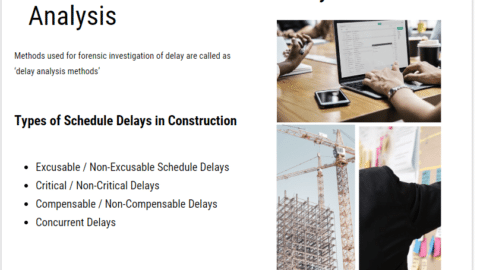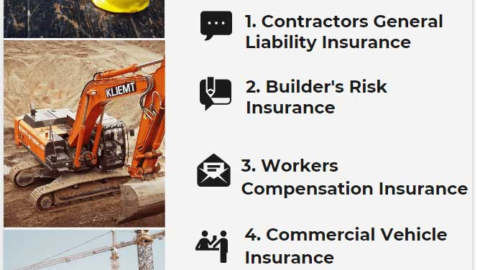5 Steps To Ensure OSHA Standards Are Followed On Your Construction Projects
There is a lot of activity at a bustling construction site. The construction manager has many things to keep track of work quality, schedules, supplies, and labor, to name a few. Worker safety should also be on the list of priorities. But how can you integrate OSHA standards into your everyday process, so that you aren’t sweating bullets when the OSHA inspector shows up at your site?The penalties for OSHA violations of osha construction standards can be severe. Offenders could be subject to large fines; and in severe cases, criminal penalties. So beyond the fact that healthy employees are happier and more productive, it pays to follow OSHA standards and OSHA hazard communication standard.
Table of Contents
Instead of trying to cram your safety program into one giant marathon task, it is better to weave safety practices into everyday routines. This way, a culture of safety can be developed and made part of ordinary practices.
Follow the steps below to ensure OSHA standards are followed on your construction projects.
Step 1. Management Lead & Evaluation
Before starting on this OSHA journey, make sure that management is fully on board and supporting the mission. It is critical that top management stands behind the safety program with resources and guidance.
With this established, the first step is to perform a comprehensive evaluation of your existing safety program. This will be useful in determining where there are current deficiencies.
The review should include aspects such as the written policies, forms, records, training, and so on. It should also include an assessment of the onsite hazards.
If you are unsure where to start, the OSHA website contains many forms and checklists that can be used to audit your safety program. Using something like the Audit Tool can be a good way to identify the gaps in current practices. With the gaps known, an action plan can be developed and shared with management.
Step 2. Training for OSHA standards
To be assured that OSHA Standards are working at your construction project, you must make sure that your workers understand them! Not only is it helpful, but it is required by law to follow osha hazard communication standard.
Thus, it is essential that an effective training program be in place.
To do this, establish training objectives and follow an established training method (such as ANSI). Make sure your training matches your workers understanding, and check that they have retained the information. There are many ways to ensure this is happening. Lastly, keep detailed records on hand so that you can prove you are training correctly.
Again the OSHA website can help in this regard – with such resources as this guide to development and training of workers.
It may be prudent to specialized certifications that might be
Workers not only need to have the basic skills for the job, they must also understand and follow the safety policy.
Step 3. Personal Protective Equipment
In the hierarchy of safety controls, we know that preventing safety incidents is the primary goal. Since this is not possible in a construction project, a robust PPE policy is required for worker protection.
Of course, the proper PPE needs to be readily available for all workers as a part of OSHA standards in the workplace. You do not want access to PPE being a barrier to safety on your project.
PPE requirements should be mandatory without exception. Every level of staff should follow the requirements – and most importantly, managers should adhere to the rules. No one should be above wearing PPE. Consequences for not following policy should be well understood, and enacted upon when needed.
Step 4. Establish Routines
Routine is the bread and butter of a successful safety program as well as osha hazard communication standard. It’s the little things – the small everyday tasks – that add up to a cumulative effect for the project.
One way this should occur is with daily inspections in OSHA standards. PPE should be inspected every day for integrity before it is put on. Another way is through equipment inspection (function, hazards, etc.). Other typical pieces of this routine are work permits, Lock-Out / Tag-Out, and spotter systems. The daily shift meeting should have a section where safety issues are discussed.
Yet another area is in equipment maintenance. Making sure that equipment undergoes its proper maintenance schedule will keep it in good shape, and less likely to break down – which can lead to safety incidents. (Sometimes the maintenance can use more advanced techniques such as predictive maintenance to anticipate when an unsafe condition might occur.)
Any safety incident or near-miss should be followed by a proper investigation into the root cause. If this is done correctly, incidents will not repeat and your operation will be safer.
Step 5. Review Periodically
The safety program of OSHA standards is not a static object – it needs review and update from time to time. If the mission is sending everyone home safe every single night, constant vigilance is needed.
Perform audits on the procedures, and correct any issues you find. For example, are the workers understanding the training they are given?
Set safety goals, measure progress and share with your team. Having measurable goals and openly tracking progress can be energizing for the project.
Above all, have an open ear and encourage feedback and ideation from the workers. This can bring great ideas into play, and gives each employee a sense of ownership in the OSHA program.
Incident reports and investigations should be communicated periodically to the crews. Many sites choose to hold monthly safety meetings reviewing this information.

Conclusion: How to Follow OSHA Standards on Construction?
OSHA Standards must be followed at each construction project, but this does not need to be an undue burden on the operation. Audit the safety program and find gaps, then address them. Build a training program so that everyone is educated on OSHA Standards. Equip your workers with proper PPE for the hazards they are exposed to. Establish routines that everyone must follow. Hold anyone accountable when they do not follow procedures. Review progress and adjust where needed.
When these all add up, you can feel comfortable that OSHA standards are working at your construction project.

Victor Z Young is a Civil Engineer with 35 years of experience working alongside the executive team of various construction companies. Victor specializes in construction insurance, delay analysis, performance analysis and engineering. He holds a Doctor of Project Management from Northwestern University.










